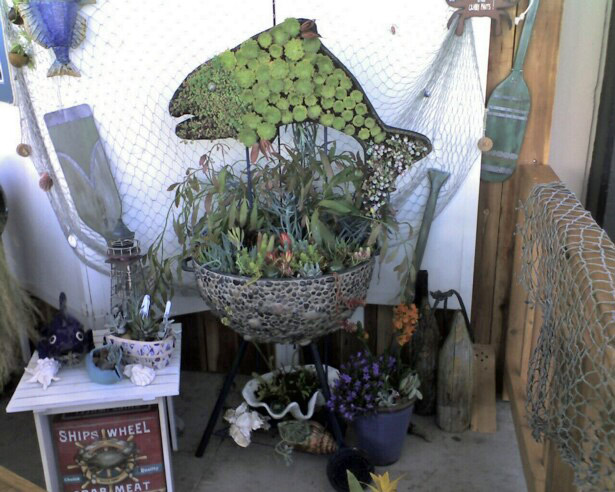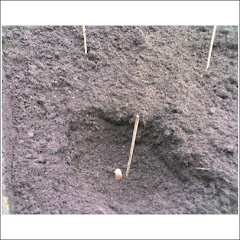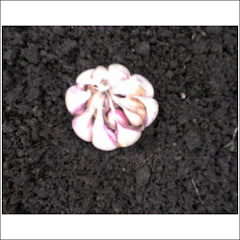Fresh vegetables can be frozen quickly and easily during the harvest season. Whether you freeze purchased
or home-grown vegetables, the keys to a successful product are using vegetables at the peak of ripeness and freezing quickly after purchase or harvest.
Selection and Purchase
Choose vegetables that are young and tender. Wash well and rinse twice in fresh water each time to remove
dirt. Trim away any bad areas, tough stems, and leaves. Cut into desired sizes.
Blanching
Although freezing slows enzyme action, it doesn’t completely halt it. Blanching, a heat treatment to inactivate
the ripening enzymes in vegetables, preserves their color, texture, and flavor for nine to twelve months in the freezer. Except for onions and green peppers, vegetables should be either water or steam blanched before being frozen. Some vegetables, such as mushrooms, eggplant, and summer squash, taste better if sauteed briefly in oil, butter, or margarine before freezing. Chill before packing. To water blanch vegetables, place the washed, prepared vegetables in a pot of boiling water. Use one gallon of water for each pound of prepared vegetables. (See table 1 for recommended blanching times for different vegetables.) Start timing the blanching action when the water returns to boiling after putting in the vegetables. Plunge the vegetables immediately into cold (preferably ice) water for the same time as you blanched the vegetable. This cold bath stops the cooking action. To water blanch, place two cups or about 1 pound of prepared vegetables in a single layer in a basket and lower into a pot containing one gallon of boiling water. The vegetables should be above the water. Cover with tight-fitting lid and start counting blanching time when steam comes up around the pot lid. (See table 1 for blanching times.) Plunge vegetables into a cold bath. You can use the microwave oven to blanch small quantities. However, there is no time or money saved when microwave blanching vegetables.
Packing Food into Freezer Containers
Drain and chill food before packing into moisture proof freezer containers. Both freezer bags and square
containers provide economical packs with regard to space used in the freezer.Fill rigid containers to the expansion line. If you use freezer bags, lay bags on counter after filling with drained vegetables and press out air. Close zipper bags except for about one inch. Use a drinking straw to suck air out and complete closure. If using a bag with a twist tie closure, gather edges around drinking straw and draw out air before twisting and tying. Date and identify contents using a moisture proof freezer pen. When freezing, place packages in the coldest area of the freezer with about one inch around the packages for cold air circulation until the food is frozen. After packages are frozen, stack tightly. Freeze only the amount that the freezer can handle
efficiently. A good rule of thumb is 2 to 3 pounds of food for each cubic foot of storage space. Overloading
slows the freezing process and adversely affects the quality of the food, especially corn-on-the-cob. Make a food inventory and post it close to the freezer. List foods and number and sizes of containers. Keep a pen close to mark the list as cartons are used.
Thawing and Preparing Vegetables to Eat
Except for corn-on-the-cob, vegetables can be cooked with little or no thawing. Corn on the cob
should be thawed completely before cooking. Greens should be partially thawed and separated before cooking.Because the vegetables were blanched before freezing, they will cook quickly. Use the smallest amount of water possible to conserve nutrients. Cook only the amount you need for the meal. Avoid letting vegetables stand after cooking as nutrients leach into the cooking water.
See The charts at this link:
http://foodsafety.nmsu.edu/pubs/_e/e-320.pdf
Saturday, September 4, 2010
Friday, September 3, 2010
What to do with all that Zucchini! Easy Cheesy Broiled Zucchini
Easy Cheesy Zucchini
If you grow Zucchini, you probably have tons. This is a quick and easy side or appetizer that can be prepared in less than 2 minutes –thus allowing you more time to garden…yea!
Turn on Broiler in oven.
Place face down in Pie pan or on a tray and place under broiler to cook outside skin.
While zucchini is in oven, take some soft butter and crush one clove of garlic
and mix in a bowl with parmesan cheese.
Remove zucchini from oven and flip over. Put cheesy garlic butter paste on the scored side.
If you like, put a tiny sprinkle of cayenne pepper on the top.
Place pan back in the broiler and wait a few minutes, depending on how brown you want it to get.
Remove from oven and serve while still sizzling.
Note to Men: My husband doesn’t cook the skin side first, so if not, you’ll need to cook the top side more thoroughly, to avoid it tasting too raw. He also does not like garlic as much as I do, so he usually just spreads butter on top and sprinkles cheese from canister. I find that method is messy…but it still tastes good and actually makes one less item to clean by skipping the cheese mixed with the butter step.
Recipe and Photos by:
Cid Young
If you grow Zucchini, you probably have tons. This is a quick and easy side or appetizer that can be prepared in less than 2 minutes –thus allowing you more time to garden…yea!
Turn on Broiler in oven.
Wash zucchini and slice lengthwise.
Score inside face diagonally.
Place face down in Pie pan or on a tray and place under broiler to cook outside skin.
While zucchini is in oven, take some soft butter and crush one clove of garlic
and mix in a bowl with parmesan cheese.
Remove zucchini from oven and flip over. Put cheesy garlic butter paste on the scored side.
If you like, put a tiny sprinkle of cayenne pepper on the top.
Place pan back in the broiler and wait a few minutes, depending on how brown you want it to get.
Remove from oven and serve while still sizzling.
Note to Men: My husband doesn’t cook the skin side first, so if not, you’ll need to cook the top side more thoroughly, to avoid it tasting too raw. He also does not like garlic as much as I do, so he usually just spreads butter on top and sprinkles cheese from canister. I find that method is messy…but it still tastes good and actually makes one less item to clean by skipping the cheese mixed with the butter step.
Recipe and Photos by:
Cid Young
Subscribe to:
Comments (Atom)





















